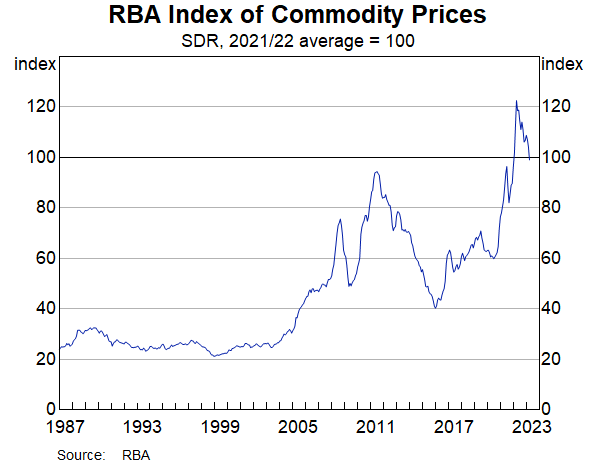As expected:
Preliminary estimates for January indicate that the index increased by 7.3 per cent (on a monthly average basis) in SDR terms, after increasing by 8.5 per cent in December (revised). The non-rural, rural and base metals sub-indices all increased in the month. In Australian dollar terms, the index increased by 4.8 per cent in January.
Over the past year, the index has increased by 19.7 per cent in SDR terms, led by higher iron ore prices. The index has increased by 11.4 per cent in Australian dollar terms.
Consistent with previous releases, preliminary estimates for iron ore, coking coal, thermal coal and LNG export prices are being used for the most recent months, based on market information. Using spot prices for the bulk commodities, the index increased by 6.3 per cent in January in SDR terms, to be 24.2 per cent higher over the past year.
For further details regarding the construction of the index, please refer to ‘Changes to the RBA Index of Commodity Prices: 2013’ in the March 2013 issue of the Bulletin and ‘Weights for the Index of Commodity Prices’ (April 2020).
Details are in the attached table and graph.
Thanks China trade war!


